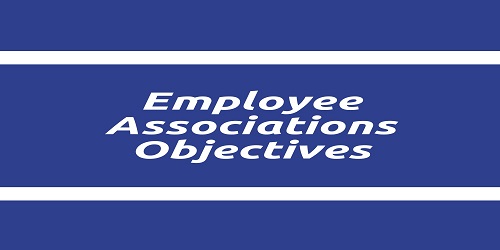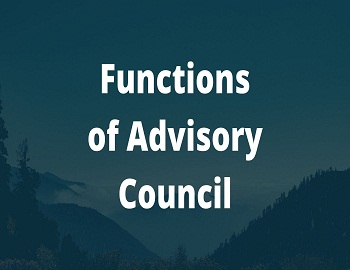Table of Contents
Span of Control:
The span of control is an important principle of organization. The credit for explaining this principle belongs to Graicunas. The principle of the Span of Control is taken to mean that superior exercises and can exercise control over the work of only a limited number of subordinates. This limitation is imposed by the human span of attention which in itself means that each one can attend to a limited number of activities.
Defining the meaning of the Span of Control, Dimock observes that it consists of the number and range of direct habitual communication contacts between the chief executive of an enterprise and his principal fellow officers. In other words, the Span of Control refers to the issue and problem of the number of subordinates that each officer should or can effectively supervise.
The Span of Control is related to the psychological problem of the Span of Attention, which refers to the number of people whom one can attend at a time. In fact, the Span of Control is nothing but the Span of Attention applied to the work of supervision and control of subordinates.
The issue of the Span of Control is a natural outflow of the Principle of the Scalar System. A scalar system involves a number of tiers or steps one above the other in an organization and each step is headed by a single person.
Each higher level controls its lower level. The equation that arises is how many persons should work under the control and supervision of one person. In answering this question different scholars have given different views. Each one thinks that a particular number is ideal or practicable. There is a lack of agreement among them regarding the exact limit of the Span of Control. The problem of fixing the number of subordinates is the problem of the Span of Control.
V. A. Graicunas was of the opinion that a superior can supervise 3 to 5 subordinates. However, Sir Ian Hamilton fixed the limit at 3 to 4, and Urwick at 5 to 6 at the higher levels of work and 8 to 12 at the lower levels of work.
In order to suggest a formula for determining the Span of Control, Graicunas felt that while the number of individual subordinates increases by arithmetical progression, the resultant network of relationships increases by geometrical progression.
Lord Haldane and Graham Wallas have been of the view that the chief executive can supervise 10 to 12 persons without facing any extra burden.
Similar divergent views are still being expressed by different scholars. As such neither there does nor can exist any unanimity regarding the exact number of persons an executive can be in a position to supervise effectively. There is, however, unanimity of opinion on the point that the shorter the span, the greater shall be the contact resulting in more effective control over the subordinates.
Determinants of the Span of Control:
The search for an ideal number that a superior can control has been and is destined to be a useful search. As such, in determining the Span of Control, the best thing is to keep in view certain general factors which always influence and determine the number of persons which a person can supervise and control. These are often described as the determinants of the Span of Control. According to Luther Gullick, “There are three factors that greatly influence the Span of Control i.e., function, time, and space. We plan to discuss these three and one more factor that together determine the span of control.
(1) Nature of Function- It refers to the type of work to be supervised. When the nature of work is routine, repetitive, and homogeneous, the Span of Control is more than when the work is of heterogeneous character. Further, too frequent changeovers from one mental framework to another reduce the Span of Control.
(2) Time- The time factor means the age of the concerned organization. The Span of Control is greater and supervision can be more rapid in an established organization. In a new organization, precedents are yet to be set and new problems keep on arising. Hence, supervision is not easy and the Span of Control is limited.
(3) Space- Space refers to the physical distance or nearness between the official and his subordinates. The Span of Control increases if the people to be supervised are working under the same roof as the supervisor. If they are scattered at different places, the Span of Control becomes limited.
(4) Capacity or Personality of the Supervisor- If the supervisor is competent, able, and has a strong personality, he can supervise more persons. If he is weak, he may not be in a position to supervise even a few persons effectively. Thus, an incompetent supervisor’s Span of Control is always limited. The quality and scope of the Span of Attention of the supervisor is an important determinants of the Span of Control.
Education, training, and skill of the officer and the feeling of self-confidence in the higher officers are also determinants of the Span of Control. An educated trained and experienced officer has a wider Span of Control whereas an uneducated or less educated one is bound to have a limited and less effective Span of Control. Also, a self-confident and courageous officer has a wider Span of Control than a weak or less self-confident officer.
Moreover, with the development of new means of communication as well as administrative and managerial technologies, the Span of Control has undergone a change. The increasing use of automation in administration, the information revolution, and the growing number of specialists are the factors responsible for such a change. Automation and mechanical processes are being utilized for simplifying communications. Mechanization/computerization has been applied to activities like accounting, tabulating, purchasing, sorting, and computation work. Internal video monitors and internal communication systems have improved the chances of an increased Span of Control of the supervisor over his subordinates. Thus, the length of the Span of Control has in recent times, increased, and how a supervisor can control more subordinates. However, differences in the personalities and skills of the superiors continue to constitute an important determinant of the Span of Control.
Importance:
Thus, the concept of the Span of Control is of immense value for the organization of administration. The quality of work of an organization depends upon an effective control and supervision system. Hence, there is a strong need for the use of the principle of Span of Control. No organization can ignore it. If the span exceeds the capacity of an individual, it results in a breakdown of the organization. The problem of the Span of Control is a natural extension of the principle of Hierarchy or the Scalar System. A hierarchical organization involves a number of tiers or steps one above the other in an organization. How many such levels an organization should have depends upon the total number of employees at the bottom to be supervised and the number of subordinates each supervising officer can effectively supervise. Thus, there is a close relationship between Hierarchy and the Span of Control. The levels or tiers in a hierarchy have to be established after taking into account the Span of Control of the superior officer/officers.
Relationship between the Span of Control and Hierarchy:
The levels or tiers in a hierarchy should be established after taking into account the Span of Control of a superior officer. We would like to explain all this by giving an example. Suppose the number of police constables in a state is 20,000 and one superior officer can effectively supervise the work of 5 subordinates. The number of levels or steps would be as follows:

Here 20,000 constables divided by 5 gives 4,000 Sub-Inspectors at the next level. The latter number divided by 5 again requires 800 inspectors to supervise them. They require 160 Deputy Superintendents of Police and they in turn need 32 Superintendents of Police and they in their turn are under 6 Deputy Inspectors General. 6 Deputy Inspectors General have to be placed under one Inspector General as their immediate superior.
If the number of constables is increased to 30,000 and the number who could be effectively supervised by one officer was still 5, the number of levels would increase to 8.

Here, a new level of Assistant Inspectors General had to be introduced because the number of the total personnel to be supervised at the bottom was larger and the supervisory capacity of each officer remained limited to 5. If each person could supervise 6 subordinates instead of 5, the number of levels required would remain at 7 again.
If the number of Employees is 10000 and the Span of Control is 10, the number of levels would be 4:

Like the principle of Hierarchy, the Span of Control is also a universally accepted principle of organization. If the number of levels is more, the Span of Control will be less and the supervisors will be more. On the other hand, if the levels of an organization are less, the number of supervisors will decrease and the delegation of authority will be more.
Conclusion:
The Principle of the Span of Control is a general guiding principle in administrative organization as has been the principle of hierarchy. The quality and efficiency of work in an organization improve considerably if the superior officers exercise effective control over the subordinates. There is no ‘ideal’ number of persons a supervisor can supervise. The Span of Control varies under the influence of several factors like function, time, space, the personality of the superior, the number of subordinates, the delegation of authority, and techniques of supervision.









Comments (No)